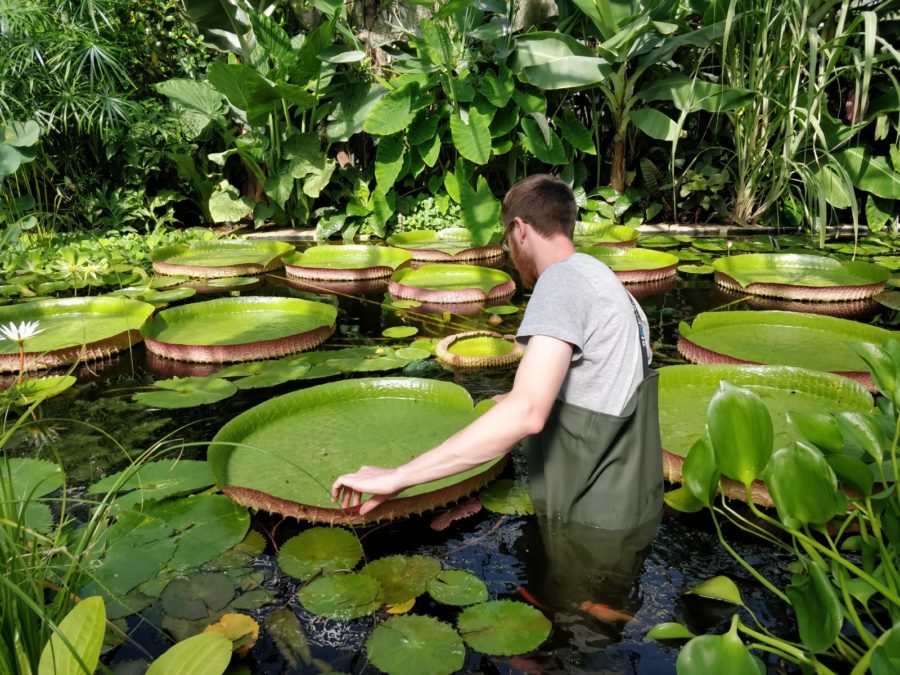A new species of giant water lily has been discovered – and it’s been hiding in plain sight for 177 years.
Rebecca Morelle
The huge plant had been in the archives of the Royal Botanic Gardens, Kew and was growing in a number of aquatic collections but it was mistakenly identified as another species.

Now a detailed scientific study has revealed that it is new to science.
It also holds the record as the world’s largest water lily, with leaves growing more than 3m (10ft) wide.
The plant has been called Victoria boliviana – named after Bolivia, where it grows in a single water basin in part of the Amazon river system.
Horticulturist Carlos Magdalena, one of the world’s leading water lily experts, long suspected that the plant was different from the other two known giant species, Victoria amazonica and Victoria cruziana.
So scientists from Bolivia – from the National Herbarium of Bolivia, Santa Cruz Botanic Gardens and Public Botanic Garden La Rinconada – donated some seeds to Kew.
He told BBC News: “It meant we could grow it side-by-side with the two other species under exactly the same conditions. Once we did this we could very clearly see that every single part of the plant was totally different.”
Working alongside Carlos, botanical illustrator Lucy Smith made detailed scientific drawings of all three species.
This also involved heading into the glasshouse at night because water lily flowers only come out in the dark.
 IMAGE SOURCE,CARLOS MAGDELENAImage caption,The new species grows in the wild in Bolivia
IMAGE SOURCE,CARLOS MAGDELENAImage caption,The new species grows in the wild in Bolivia
She said: “I was able to get access to the flowers, and also by looking at the leaves, I could, as an illustrator, highlight those differences that I saw.
“And in fact, while I was drawing those differences, they became even stronger in my mind and I found new ways of telling them apart.”
She added: “Maybe I’m biased, but out of the three species I think [the new species] has one of the most beautiful flowers.” Read more from BBC.





